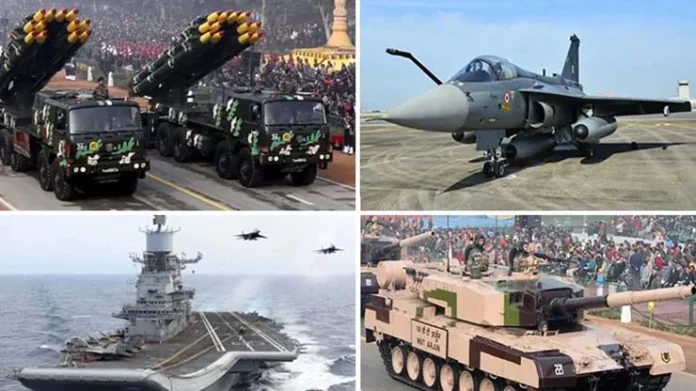In a major reform initiative, the Ministry of Defence (MoD) of India has undertaken a comprehensive overhaul of the Defence Acquisition Procedure (DAP) 2020. The move is aimed at accelerating procurement timelines, enhancing efficiency, and significantly boosting the participation of the private sector in defence production. This aligns with India’s broader national objectives of achieving self-reliance (Aatmanirbharta) in defence and promoting the “Make in India” initiative.
Core Components of the Reform
-
Streamlining Procurement Timelines
-
A high-level review committee, headed by the Director General (Acquisition), has been formed to identify delays and procedural redundancies in the current system.
-
The review will focus on simplifying user trials, expediting approvals, and decentralising decision-making authority.
-
Inputs have been invited from stakeholders including armed forces, industry, startups, and think tanks, with a submission deadline set for early July 2025.
-
-
Boosting Private Sector Engagement
-
The reform aims to make defence contracts more accessible to private players by simplifying entry norms and enhancing clarity in bidding processes.
-
Efforts will also be made to ease technology transfer mechanisms and encourage partnerships between Indian firms and foreign Original Equipment Manufacturers (OEMs).
-
-
Aligning Policy with Aatmanirbharta and Indigenous Design
-
A renewed focus will be placed on indigenously developed systems and technologies.
-
Defence offset guidelines may be updated to ensure long-term investments in Indian manufacturing capabilities.
-
The policy intends to create a conducive environment for co-development and co-production of next-generation technologies.
-
-
Enhancing Transparency and Clarity
-
The existing DAP structure will be reviewed to address ambiguities and inconsistencies in procedural language.
-
Standardised formats for RFPs, clearer definitions, and improved accountability frameworks are being considered.
-
Trial evaluation methods and post-contract award stages will also be simplified.
-
Strategic Drivers
-
Modernisation Needs: The Indian Armed Forces require timely induction of advanced platforms and systems to maintain operational superiority.
-
Industrial Development: A stronger role for the private sector is expected to diversify the industrial base and generate employment.
-
Global Positioning: By enabling a more agile procurement system, India aims to emerge as a competitive hub for global defence production and exports.
-
Policy Synergy: The reforms are designed to align defence procurement with initiatives like Aatmanirbhar Bharat and the Innovation for Defence Excellence (iDEX) program.
Expected Outcomes
-
Faster Approvals: Procurement cycles from initiation to contract signing will be significantly reduced.
-
Increased Private Participation: A higher number of contracts are expected to be awarded to private firms, startups, and MSMEs.
-
Stronger Indigenous Base: The reforms are expected to strengthen the domestic defence ecosystem through increased investments and technology adoption.
-
Export Growth: Streamlined procurement will boost India’s reputation as a reliable defence supplier on the global stage.
Challenges Ahead
-
Maintaining Accountability: Rapid procurement processes must still ensure compliance, due diligence, and ethical standards.
-
Industry Readiness: The private sector must be prepared to scale up both quality and quantity of production.
-
Cultural Shift in Defence Bureaucracy: Adoption of decentralised, faster decision-making will require mindset changes within the procurement machinery.
-
Monitoring and Feedback: Continuous stakeholder engagement and real-time feedback loops will be essential for success.



